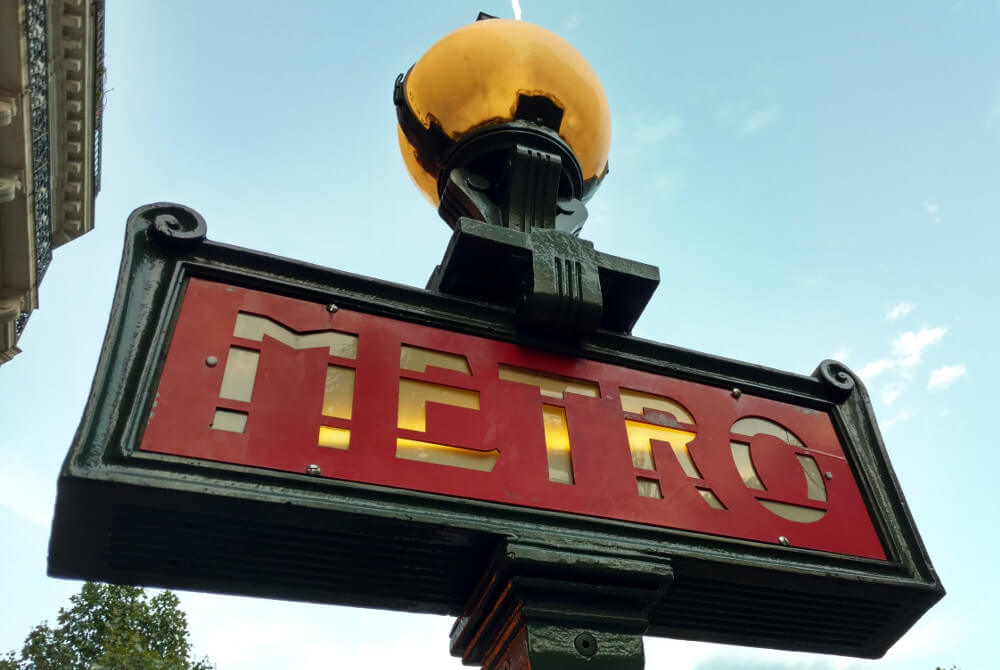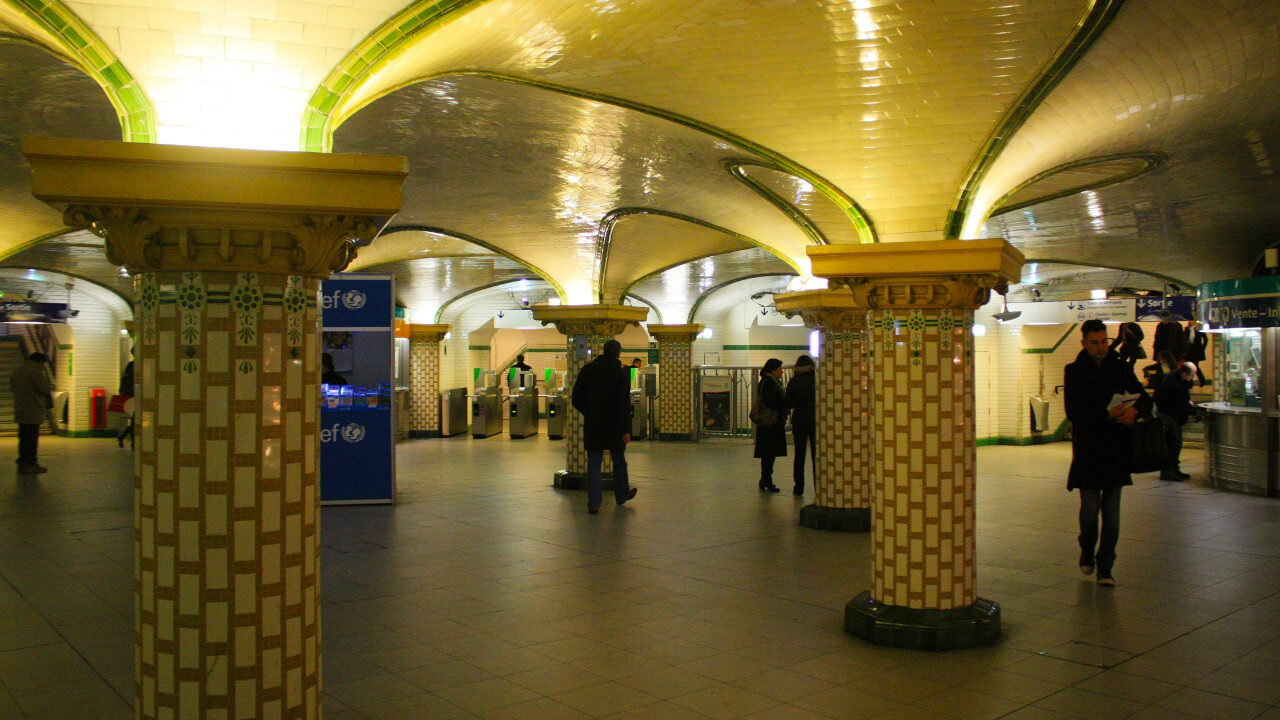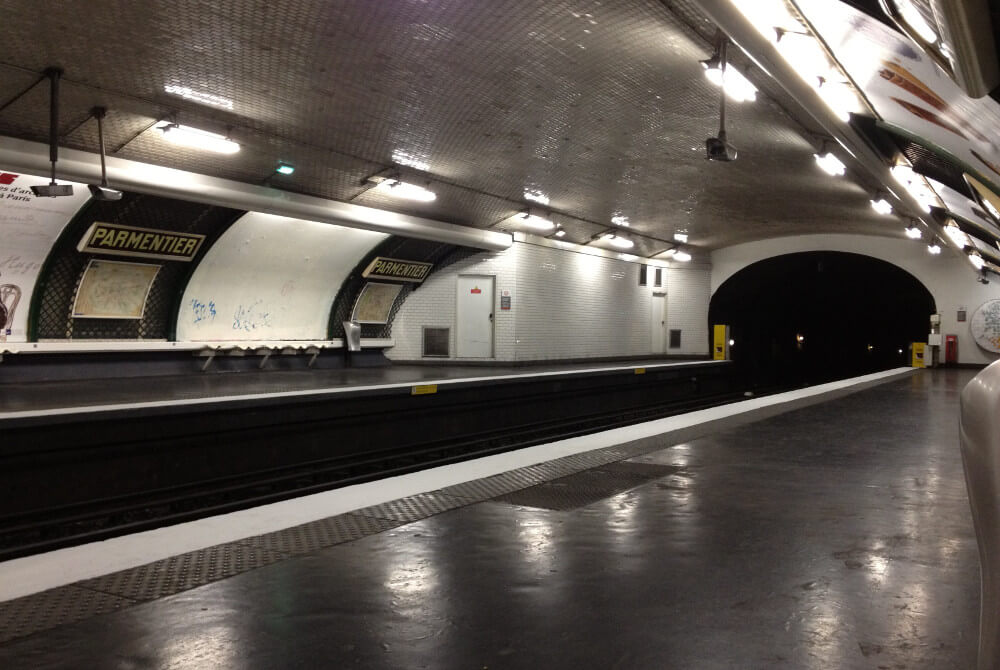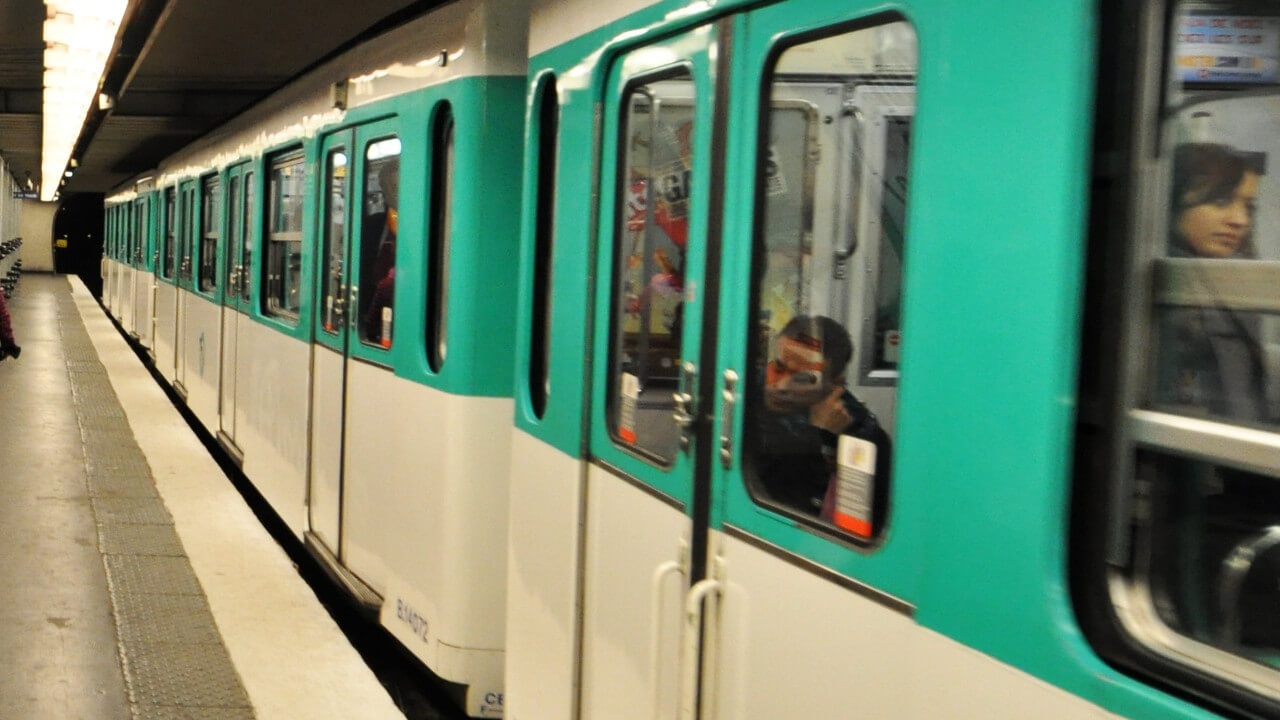Paris Metro Map – The route network
The subway in Paris, which is also known under the French name “Métro Paris”, was opened on July 19, 1900 in the run-up to the World Exhibition and is therefore the fourth oldest subway system in Europe after the “London Underground”. The total of 16 lines, whereby the M3bis and M7bis lines are fork lines, extend over a total length of around 219.9 kilometers. This makes the Paris metro network one of the longest metro systems in the world. The lines on the Paris Metro Map can be identified both by the “M” in front of them and by a unique line color. This also makes it easier to find your way around the platforms, which are often served by several metro lines.
A characteristic feature of the metro map in Paris is the extreme network density between the 303 stations. It is not for nothing that the metropolis on the Seine advertises that you never have to walk more than 500 meters to get from A to B in Paris. Whether this promise can be kept is uncertain. What is certain, however, is that the metro stations in Paris are actually only half a kilometer apart on average. So it’s no wonder that the metro is so popular with Parisians. This popularity is reflected in 11.8 million passengers per day, which corresponds to around 4.3 billion passengers per year.
Inhaltsverzeichnis
The Paris metro lines at a glance
- M1 (La Défense – Grande Arche ↔ Château de Vincennes)
- M2 (Porte Dauphine ↔ Nation)
- M3 (Pont de Levallois ↔ Gallieni)
- M3bis (Gambetta ↔ Porte des Lilas)
- M4 (Porte de Clignancourt ↔ Mairie de Montrouge)
- M5 (Bobigny – Pablo Picasso ↔ Place d’Italie)
- M6 (Charles de Gaulle – Étoile ↔ Nation)
- M7 (La Courneuve – 8 May 1945 ↔ Villejuif – Louis Aragon / Mairie d’Ivry)
- M7bis (Louis Blanc ↔ Pré Saint-Gervais)
- M8 (Balard ↔ Pointe du Lac)
- M9 (Pont de Sèvres ↔ Mairie de Montreuil)
- M10 (Boulogne ↔ Gare d’Austerlitz)
- M11 (Châtelet ↔ Mairie des Lilas)
- M12 (Front Populaire ↔ Mairie d’Issy)
- M13 (Asnières-Gennevilliers ↔ Châtillon – Montrouge)
- M14 (Saint-Lazare ↔ Olympiades)
Information for tourists about the Paris Metro Map
The fact that Paris is the epitome of art, history and culture is easy to see from the tourism statistics. In 2016 alone, around 36 million people visited the French capital. Thanks to its dense network and frequent service, the metro is also the number one means of transportation for tourists. After all, there is no more convenient way to see sights such as the Eiffel Tower, the Louvre, Place de la Concorde, the Musée d’Orsay or Notre-Dame de Paris Cathedral.
Sightseeing is particularly easy with the help of the Paris Metro Map, because with a few exceptions, all of the city’s sights can be reached directly by metro. But the Paris public transport company also offers metro tickets for hotspots further afield, such as the Palace of Versailles or the Disneyland Resort Paris, with connections to suburban trains, the so-called RER lines. The free “Visit Paris by Metro” app from the public transport company provides more information.
Paris Metro tickets & prices
Like many other metropolises, Paris also relies on a standardized ticket system for public transport, so that buses, suburban trains, streetcars and the Paris metro can be used with just one ticket according to the plan. The public transport network in Paris is divided into six fare zones. While zones 1 and 2 completely cover the city center, zones 3, 4, 5 and 6 extend further and further into the suburbs and directly adjacent municipalities.
For most metro travelers, however, only the two inner city zones are relevant anyway, as the metro only covers these zones according to the Paris Metro Map. This also applies to the La Defense metro station, which is actually already in Zone 3. In Paris, all metro tickets are valid for this core area. The purchase of a Metro ticket also entitles the holder to use all other means of public transport in zones 1 and 2.
One-way tickets in Paris are generally valid for 90 minutes. The so-called “Ticket+” entitles the holder to any number of transfers between different metro trains. The ticket only loses its validity within the maximum period of validity when you leave the subway station. In addition to one-way tickets, the Paris transport companies also offer season tickets as an alternative.
If you want to go sightseeing in the city center, you can buy the “Carte Mobilis” day ticket, for example, which entitles you to unlimited travel in zones 1 and 2. With regard to a one-week stay, it is cheaper but also more complicated to buy a weekly ticket. To obtain such a Metro ticket, which is valid from Monday to Sunday, you must bring a 25 mm x 30 mm passport photo with you.
The most important metro tickets in Paris
| Ticket | Prices | Buy a ticket |
|---|---|---|
| Single ride | 1.90 Euro | available on-site |
| Singleride (childs) | 0.95 Euro | available on-site |
| 10 rides ticket | 14.90 Euro | available on-site |
| 10 rides ticket (childs) | 7.45 Euro | available on-site |
| Daily ticket (24h) | 12.00 Euro | available on-site |
| Daily ticket (72h) | 26.65 Euro | available on-site |
| „Paris Visite“-Ticket (24h) | 9.30 Euro | available on-site |
| „Paris Visite“-Ticket (72h) | 20.70 Euro | available on-site |
| „Paris Visite“-Ticket (120h) | 29.90 Euro | available on-site |
The “Paris Visite” tourist ticket, which is available for several days and for use in several zones, is much more attractive for tourists. On the one hand, the “Paris Visite” ticket entitles the holder to use public transport as they wish, while on the other hand it also includes numerous attractive discounts. These include reduced admission to various state museums and discounts on bicycle rental and at Galeries Lafayette.
In Paris, metro tickets are available both at the service counters in the metro stations and at the ticket machines outside the entrances to the platforms. You can pay at the machines with coins and bills as well as with debit and credit cards. While single tickets (“Ticket+”) and day tickets (“Carte Mobilis”) are also available from ticket machines, weekly tickets and other special tickets such as the “Paris Visite” ticket must be purchased at the ticket counter.
However, if you want to buy your ticket at the ticket counter, you should know that they close at 10 pm at most Métro stations. Online or mobile tickets are not officially available. However, some service providers offer to send one-way tickets and day tickets for an additional charge.
Unlike in cities such as Berlin, it is not possible to fare evade on the Paris metro, as access to the platforms is blocked by electronic turnstiles or doors. These only open after the ticket has been inserted into the reader on the right-hand side. If a ticket is valid, the lock opens. However, if an invalid ticket is inserted, a warning tone sounds. One-way tickets are automatically valid for 90 minutes during this procedure. These are finally validated when leaving the subway station, which is also done by an electronic barrier marked “Sortie” (exit).
Metro timetable in Paris
While other metropolises rely on a fixed metro timetable with defined times, the Paris metro relies on a plan that is based exclusively on a time-of-day system. Most lines usually run every 5 to 10 minutes during the weekday operating period from around 5:00 am to 1:00 am. Especially at peak times between 7:00 and 9:00 a.m. and between 6:00 and 8:00 p.m., the frequency will be increased to an interval of two to four minutes. On the particularly busy M1 and M4 lines, the interval between two subway trains during rush hour is only 85-90 seconds.
Night owls will also benefit from the fact that the Paris Metro has extended its timetable on Friday and Saturday nights and from Saturday to Sunday, as well as on the nights before public holidays. The metro runs accordingly until approx. 2:15 am. If you don’t want to take a cab after closing time, you can also use one of the 47 night bus routes in Paris. These run every 15 to 60 minutes between 0:30 a.m. and 5:30 a.m., depending on the line. The stops of the so-called “Noctiliens” are marked with an “N”.
Further information on the Paris Metro
Stations and tracks that are not shown on any map and cannot be found with any app are not only associated with the Hogwarts Express and track 9¾, but also in Paris. The city of love has a total of 18 metro stations that were either never opened or were closed after the Second World War for a variety of reasons. Some of them are now open to the public as event venues. Probably the most famous ghost station is the “Porte des Lilas – Cinema” station. It is regularly used for film shoots and has been seen in films such as “The Fabulous World of Amélie”.
An agreement between STIF and the operating company RATP ensures that the Paris Metro runs as punctually as possible. The aim of this agreement is to ensure that 95 percent of all subway trains arrive on time. If a value of less than 95 percent is reached, a contractual penalty is due. If, on the other hand, the target value is exceeded, there is a bonus payment. The system seems to work, as most lines are in the 96.5 to 100 percent range. Only the M1 and M14 lines, which are equipped with fully autonomous trains, can top these figures and achieve values of over 100 percent.







